City Lights: Dual Format Edition
Charlie Chaplin made a career of directing, producing and starring in one great film after another and everyone will have their personal favourite, mine is City Lights. Described in the opening titles as a pantomime, it is, as far as I'm concerned, the greatest silent movie ever made and that's including things like Battleship Potemkin, Nosferatu andBirth of a Nation.
There are several stories going on at the same time with Chaplin's 'Little Tramp' involved in all three. The first sees him waking up on a giant statue which is being unveiled in a marquee event and being ordered to get down despite the enormous sword being stuck up his trousers and wanting to try and stand and salute as the national anthem is being played. Following this, he goes down to the river and prevents a millionaire from committing suicide to the detriment of his own health and general well-being. He also encounters a blind flower girl, to whom he immediately takes a shine.
As she is desperately poor, the Little Tramp wants to do what he can to help which, given his own perilous financial situation, isn't really much but, because the millionaire is so grateful that his suicide attempt was foiled, he takes his new friend under his wing and shows him the high life. However, the man has a rather terrible memory because of his constant boozing and can go from recognising the Little Tramp at his best friend to not knowing who he is in a matter of minutes.
When the flower girl's grandmother is given an eviction notice because she has fallen behind on her rent payments, she doesn't tell her granddaughter because she has just recovered from a serious fever but, when the Little Tramp, the girl's new best friend, shows up, he finds a letter addressed to her and reads it out. Seeing that the girl is desperately troubled, he tells her not to worry as he will pay the rent first thing in the morning. He also sees an article in the newspaper about a doctor in Vienna who has come up with a radical cure for blindness and says he will also get the money to pay for the treatment. Of course, she believes him as she thinks that the money he has given her in the past is because he is a millionaire, not a homeless tramp who is able to secure the occasional massive handout from his inebriated friend.
When he is fired from his job picking up animal faeces from the roads (when increasing numbers of horses and even an elephant pass by him), he stumbles into a seedy boxing venue where the manager pits man against man in a winner take all fight for $50. As the girl's rent is only $22, he makes an arrangement with another fighter that they will go easy on one another and split the money 50-50. However, this all goes wrong when the man receives a telegram telling him that the mob are on his tail and he must leave town immediately. His replacement won't have anything to do with such an agreement so the Tramp must try and avoid physical contact with this hard punching bloke who clearly knows a thing or two about boxing -- something that our hero does not and, despite his best efforts, ends up being knocked out.
As the millionaire has gone on a trip to Europe, he can't be counted on for any financial support but, as luck would have it, he returns that day and, recognising his friend, invites him back to his house for refreshments and immediately gets hammered. Having promised to help and giving the Tramp $1000, everything seems to be working out perfectly but, unbeknownst to the two men, there are a couple of burglars in the house who knock the millionaire out and, when he regains consciousness, he can't remember handing over the money so the Tramp is arrested for larceny. Not wanting to let the girl down, he escapes from custody and gives her the money before being rearrested and sent to jail for about six months.
Of course, things will always work out well when the flower girl, her sight now restored, recognises a pitiful tramp as the one who has done so much to help her. This is one of the most perfect endings in cinematic history and is just heartbreakingly beautiful.
The Disc
Extra Features
I was only provided with a BD-R for review, only containing the film, so haven't seen any of these extra features but the final set contains:
· An introduction by David Robinson
· The Chaplin Today featurette that was available on the previous DVD releases
· Footage of Winston Churchill's visit to the set
This is a Dual Format release which means it contains both a BD and DVD so will be of interest to those of you who already have a Blu-ray player or are considering buying one in the near future and will use the DVD in the interim period.
The Picture
Just as the other releases from mk2 has been absolutely stunning from a visual perspective, this remastered high-definition picture is remarkably crisp and clear with all of the scratches and grain removed or made less noticeable(at least most of them, not too much to make the whole thing look artificial). The contrast levels have been bumped up nicely so that the monochrome photography looks as good as I have seen apart from when I saw this cinematically projected.
The choreography is absolutely brilliant with scenes showing how well Chaplin planned various things out. The scene where he is looking at items in a shop window and walks backwards several times to take a better look, always stepping on the top of a pavement level lift which is constantly moving, only disappearing when he steps off it is terrific. Furthermore, the boxing sequence is Chaplin at his very best as the Tramp is desperate to stay out of his opponent's way so manipulates the bout so that the referee is always in between the fighters before stepping to one side and clocking the man with a sneaky punch. This sequence itself is laugh out loud funny, particularly with the simultaneous knockdowns where each man was on the verge of being counted out but rises just in time for the other one to fall back on the campus so that the referee can turn round to begin counting.
The Sound
The DTS-HD Master Audio 5.1 soundtrack is, like the picture, much better than the Dolby Digital one on the DVD and, thanks to the remastering process, has less pops and crackle and virtually no background hiss. There is also an LPCM 2.0 mono option which does the job just as well although you do miss out when the score is directed to the rears, albeit very slightly.
As this is a silent film with scored music and the only sound effects are the kazoo sounds at the beginning when the dignitaries are speaking, neither soundtrack is pushed to the limit. The music comes across clearly and it really is beautifully scored, underscoring emotion and the dramatic element beautifully.
Final Thoughts
City Lights is one of the greatest movies ever made and a Blu-ray release is long overdue, despite the age of the source material. Although there are less extra features that were on the mk2 DVD release as part of the Chaplin Collection, the vast improvement on the AV front makes this a set worth serious consideration for fans of Charlie Chaplin and silent comedy.
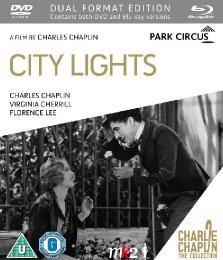
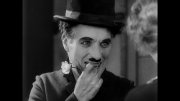
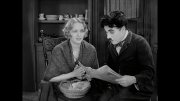
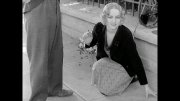
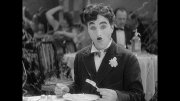
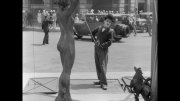

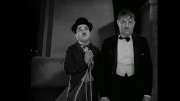
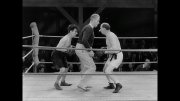
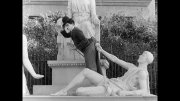
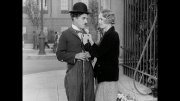






































Your Opinions and Comments
Be the first to post a comment!